Disclosure: This article contains affiliate links. We may earn a commission from purchases at no extra cost to you, which helps our travel content.
Standing at the intersection of urban design and natural beauty, Carmel, Indiana caught me completely off-guard. As someone who spends her days in Australia's wilderness and her holidays in ancient ruins or dense rainforests, I never expected an American Midwest suburb to stop me in my tracks. Yet here I was, mesmerized by a city where roundabouts bloom with seasonal plantings, public art punctuates every corner, and the boundary between urban infrastructure and natural space blurs into something truly remarkable.
A Forest Ranger's Take on America's Roundabout City
Coming from Darwin's rugged landscapes to Carmel's manicured streets might seem like cultural whiplash, but as a conservationist who studies the intersection of human design and natural spaces, I found myself utterly fascinated. Carmel boasts over 140 roundabouts—more than any other American city—and in autumn, each transforms into a canvas of amber, crimson and gold as thoughtfully selected native plants catch the fall light.
What struck me most wasn't just the aesthetic appeal, but the ecological mindfulness. Many roundabouts incorporate native Indiana plant species, creating micro-habitats for pollinators while simultaneously reducing carbon emissions (cars idle less at roundabouts than at traditional intersections). I spent an entire morning photographing these circular gardens, my plant identification app working overtime to help me catalog the surprising biodiversity woven into the city's infrastructure.
The city's commitment to greenspace goes beyond roundabouts—Carmel maintains that no resident should live more than five minutes from a park or greenway. This philosophy resonates deeply with my belief that urban spaces should never disconnect us from nature.
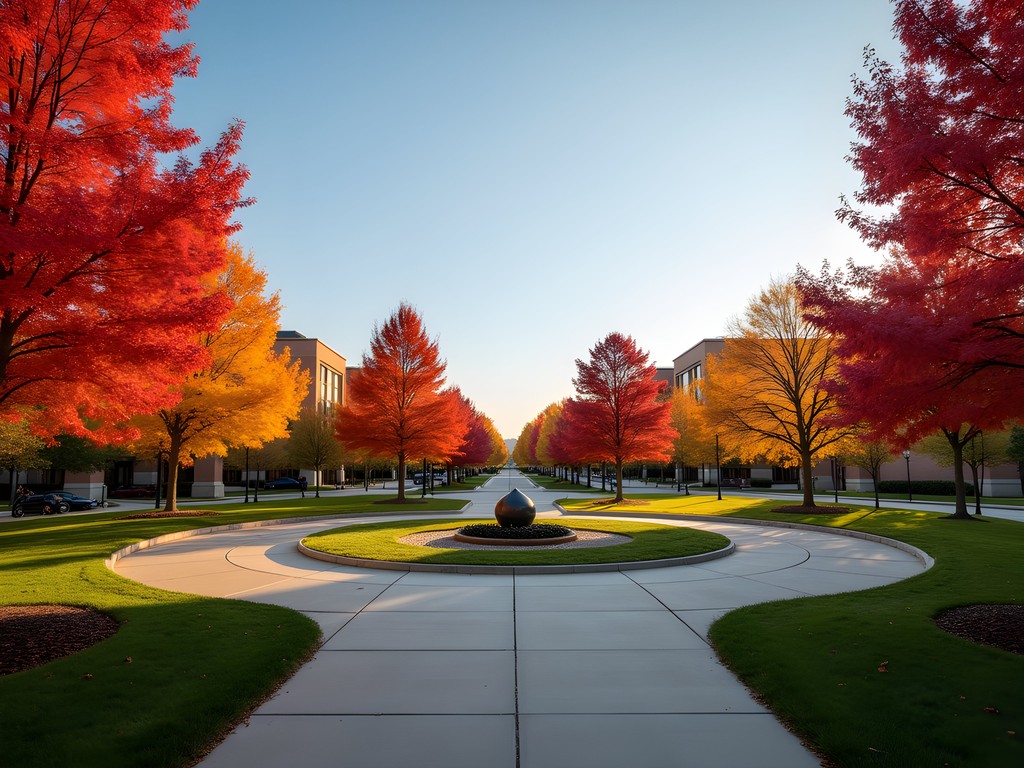
💡 Pro Tips
- Download the Carmel roundabout map from the visitor center—they actually offer a self-guided tour route of the most impressive ones
- Visit in mid-October for peak fall foliage in the roundabouts and along the Monon Trail
- The roundabouts along Illinois Street showcase some of the best seasonal plantings
The Monon Trail: Urban Wilderness Corridor
If Carmel's roundabouts represent the marriage of infrastructure and nature, the Monon Trail embodies the city's commitment to preserving movement corridors—something I study extensively in my conservation work. This former railway line has been transformed into a 27-mile multi-use trail that serves as both commuter pathway and recreational space.
I spent a crisp fall morning cycling the trail, having rented a comfortable cruiser from Carmel Cyclery near the Monon Center. The trail cuts through the heart of Carmel like a green artery, connecting neighborhoods, business districts, and parks without ever forcing you to cross major roads (most intersections feature underpasses or bridges).
For couples looking to explore together, I'd recommend packing a picnic in a good insulated backpack and stopping at one of the many pocket parks along the way. My personal favorite was the contemplative Japanese garden near Carmel City Center—a perfect spot to share some local cheese and fruit purchased from the weekend farmers market.
What impressed me most was how the trail serves as a genuine wildlife corridor despite its urban setting. I spotted several species of birds, evidence of small mammals, and a remarkable diversity of insects utilizing the native plantings along the edges. It's a masterclass in how thoughtful urban planning can preserve ecological connectivity.
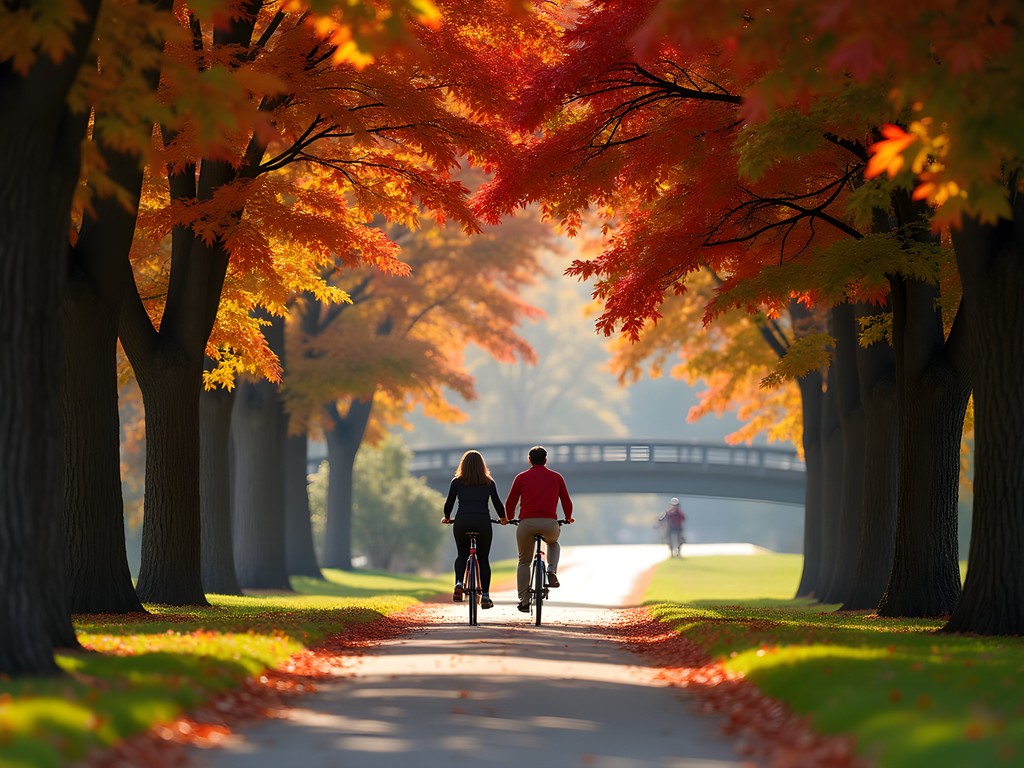
💡 Pro Tips
- Rent bikes near the Monon Community Center for the best access point
- The trail is busiest on weekend afternoons; go early morning for a more peaceful experience
- Look for the small botanical identification plaques along the northern section of the trail
Carmel Arts & Design District: Cultural Immersion
Growing up with an Italian art historian mother, I developed a deep appreciation for the way art shapes public spaces. Carmel's Arts & Design District feels like it was created precisely for people like me—those who believe cultural artifacts should be integrated into daily life rather than isolated in museums.
The district spans several walkable blocks where art galleries, studios, restaurants and boutiques coexist in a carefully preserved architectural landscape. What sets it apart from similar districts I've visited globally is how the boundaries between indoor and outdoor art blur seamlessly. Life-sized bronze sculptures of people engaged in everyday activities populate the sidewalks, creating whimsical moments of discovery as you explore.
I spent an entire evening here with my travel sketchbook and a set of watercolors, attempting to capture the unique architectural details and public sculptures. The district comes alive at sunset when the golden hour light warms the brick facades and outdoor dining spaces fill with couples enjoying the surprisingly sophisticated food scene.
Don't miss the monthly gallery walks if your visit coincides with one—the energy is infectious as artists and collectors mingle over local wines and the galleries stay open late. I was particularly impressed by the glass-blowing demonstrations at the Indiana Design Center, where you can watch artisans transform molten material into delicate forms.

💡 Pro Tips
- Visit on the second Saturday evening of the month for the gallery walk events
- Many galleries offer complimentary wine during evening hours
- The bronze sculptures throughout the district make for perfect photo opportunities—grab a map to find them all
Unexpected Wilderness: Ritchey Woods Nature Preserve
Just when I thought I had Carmel figured out as an exemplary urban space, I discovered Ritchey Woods Nature Preserve—115 acres of protected forest and wetland habitat tucked away at the edge of the city. As a forest ranger, I'm naturally drawn to these pockets of wilderness, and Ritchey Woods offered a perfect contrast to the manicured city center.
The preserve features over 2 miles of well-maintained trails winding through second-growth forest, prairie restoration areas, and wetland boardwalks. What makes it special is the clear commitment to education—interpretive signs explain the ecological restoration work underway and identify key species. I was impressed to see evidence of controlled burns in the prairie sections, a management technique we use extensively in Australia.
Autumn transforms this preserve into a sensory wonderland. I recommend bringing a good pair of trail runners as parts of the trail can be muddy after rain. The morning I visited, mist hung between the trees as chickadees and nuthatches called overhead. I encountered several couples enjoying quiet moments on benches placed strategically along the trails.
For those interested in conservation, ask at the small nature center about their volunteer days—they regularly host invasive species removal events that provide insight into the challenges of maintaining ecological integrity in urban-adjacent natural areas.
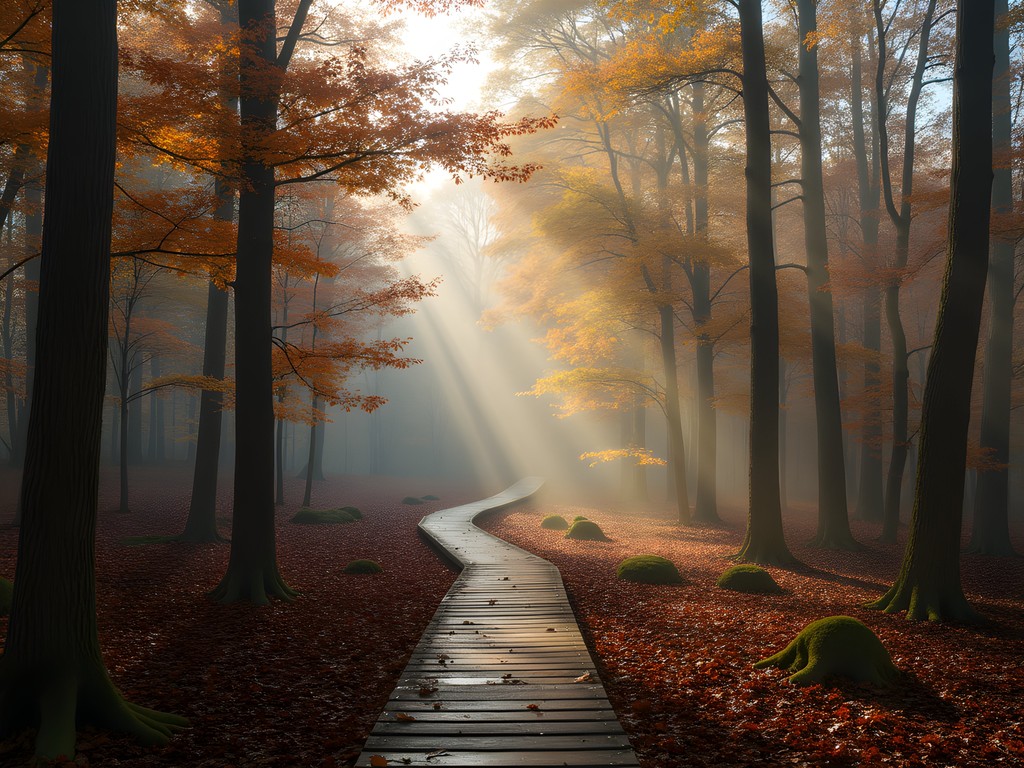
💡 Pro Tips
- The White Oak Trail offers the best fall colors and most mature trees
- Early mornings increase your chances of wildlife sightings, especially deer and foxes
- Bring insect repellent as mosquitoes can be present near the wetland sections even in fall
Culinary Discoveries: Farm-to-Table in America's Heartland
My travels have taught me that a city's food scene often reveals its true values. In Carmel, I discovered a surprising emphasis on local, seasonal ingredients that reminded me of the small Mediterranean coastal towns I frequent in Europe. Despite being in America's agricultural heartland, Carmel has elevated its cuisine beyond what you might expect.
Divvy stands out as a must-visit for couples. This small plates restaurant in the heart of the Arts District specializes in shareable dishes sourced primarily from Indiana farms. The intimate space features a wall of living herbs they snip directly into cocktails and dishes. We enjoyed their autumn harvest board featuring local cheeses, honey, and preserves served on a beautiful wooden serving platter that inspired me to purchase one as a souvenir.
For breakfast, don't miss Eggshell Bistro in Carmel City Center. The globally-inspired morning dishes incorporate unexpected flavors while using eggs and produce from nearby farms. Their shakshuka with local goat cheese became my morning ritual, enjoyed while people-watching from their patio.
What impressed me most was how even casual establishments maintained strong connections to local producers. The Carmel Farmers Market (Saturday mornings) offers a perfect opportunity to meet the people growing the food you'll enjoy in local restaurants. I spent an hour chatting with a third-generation apple farmer whose heirloom varieties supply several Carmel eateries.
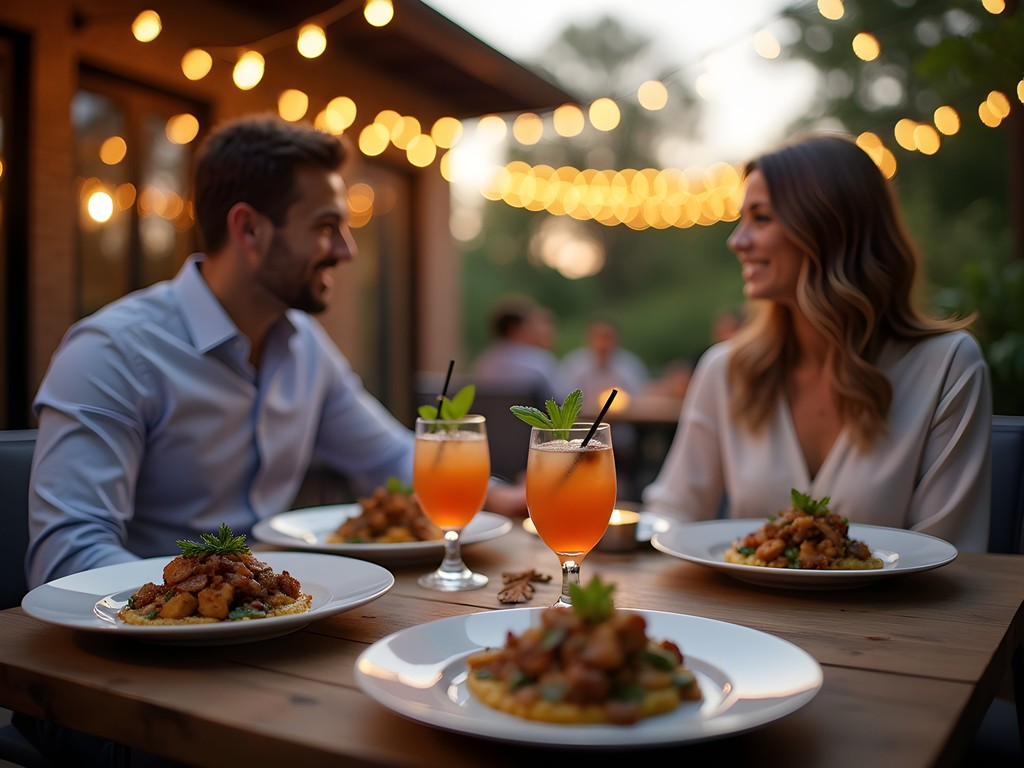
💡 Pro Tips
- Make reservations for Divvy on weekend evenings—the small space fills quickly
- Ask servers about local sourcing—many can tell you exactly which farm supplied specific ingredients
- The Carmel Farmers Market runs Saturday mornings through fall—arrive early for the best selection
Final Thoughts
As my weekend in Carmel drew to a close, I found myself reconsidering my definition of 'livability.' So often in my conservation work, I witness the tension between human development and natural systems. Yet Carmel demonstrates how thoughtful urban planning can create spaces that honor both human needs and ecological principles.
Perhaps what struck me most was the sense of intention evident throughout the city—from the carefully curated public art to the preservation of movement corridors like the Monon Trail. In many ways, Carmel represents a distinctly American interpretation of principles I've observed in the ancient cities of Southeast Asia and the Alpine villages of Europe: human-scale development that respects its natural context.
For couples seeking a weekend escape that balances cultural exploration with natural beauty, Carmel offers a surprisingly perfect backdrop. As I boarded my flight back to Australia, I carried with me not just memories of golden autumn light on brick facades and misty morning trails, but also hope that the principles of livability I witnessed in this Midwestern city might find their way into urban planning worldwide. After all, the most sustainable cities are those we fall in love with—and Carmel, Indiana is undeniably lovable.
✨ Key Takeaways
- Carmel balances sophisticated urban design with meaningful natural spaces
- Fall brings spectacular colors to both the city's roundabouts and natural areas
- The walkable layout makes it perfect for couples who enjoy exploring on foot
- The culinary scene emphasizes local sourcing and seasonal ingredients
- Despite being in the Midwest, Carmel offers cultural experiences on par with much larger cities
📋 Practical Information
Best Time to Visit
September-November for fall colors and comfortable temperatures
Budget Estimate
$150-250 per day for accommodations, meals and activities
Recommended Duration
2-3 days (weekend trip ideal)
Difficulty Level
Easy

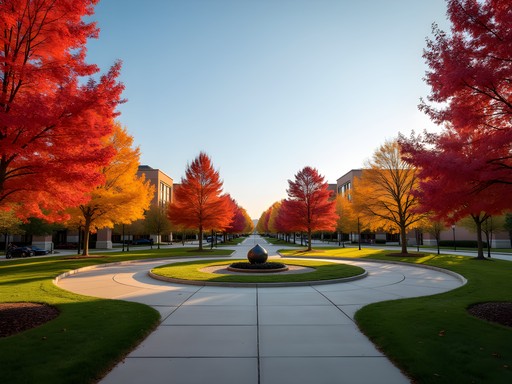
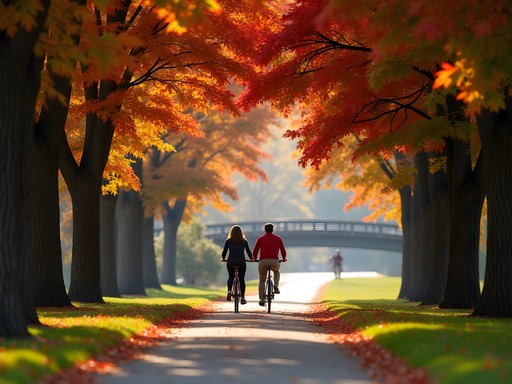
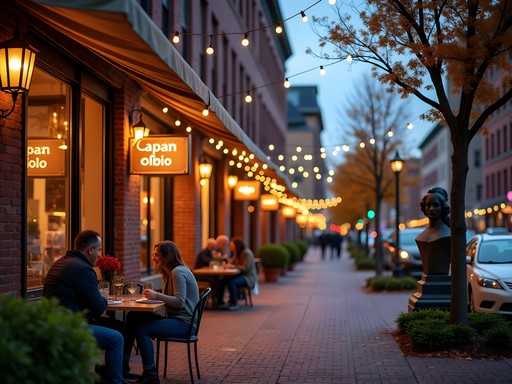

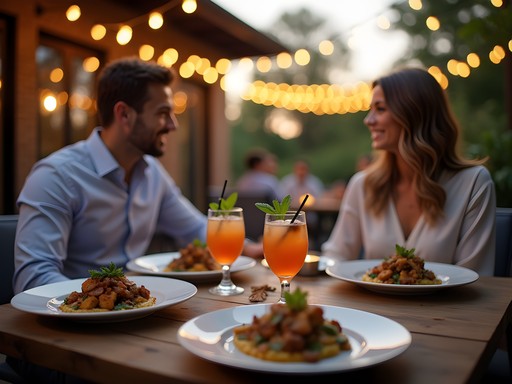









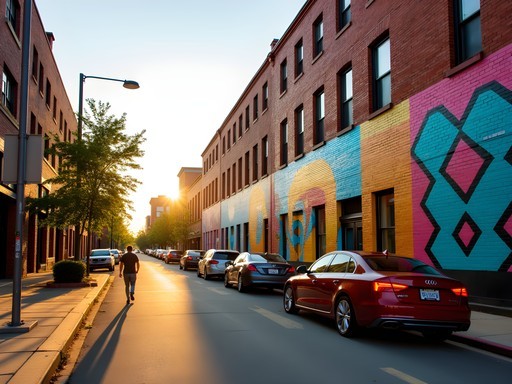
Comments
nomadadventurer
OMG I'm from Indiana and even I never appreciated Carmel this way! Your photos of the Arts & Design District are gorgeous. Makes me want to revisit my home state with fresh eyes!
Jean Wells
Maya, your perspective as a forest ranger analyzing urban planning is refreshingly unique. Having studied walkable cities across Asia, I find Carmel's development fascinating. What's notable is how they've implemented principles similar to Japanese neighborhood design - mixed-use zoning, pedestrian priority, and pocket parks - but in a distinctly American context. The Ritchey Woods preserve reminds me of Tokyo's protected urban forests. I'd be interested in your thoughts on how Carmel's conservation approaches compare to Australian models? Are there lessons each could learn from the other?
Maya Coleman
Great observation, Jean! Australia's urban conservation tends to focus on preserving larger patches of original ecosystem, while Carmel seems to excel at creating connected green corridors. I think the integration is what impressed me most - there's no stark boundary between 'nature' and 'city' in Carmel. Australia could definitely learn from this interconnected approach, while Carmel might benefit from our focus on indigenous species preservation. Would love to chat more about this!
Gabriella Tanaka
What a delightful surprise Carmel seems to be! Your description of the Monon Trail reminds me of the promenades I discovered in small French cities - places where urban planning embraces rather than conquers nature. In my sixty years of travel, I've found these unexpected destinations often leave the deepest impressions. When I visited Indianapolis years ago, I completely missed Carmel. Now I must return! I always carry my travel journal to record these hidden gems. Maya, your ranger's perspective adds such a valuable dimension to travel writing.
coffeeone
Any good coffee spots in Carmel? Heading there for a weekend and need my caffeine fix!
Maya Coleman
Absolutely! Eggshell Bistro in the Arts District has amazing pour-overs, and Carmel Coffee Traders by the Monon Trail is perfect after a morning walk. Both have great breakfast options too!
Taylor Moreau
Fascinating piece, Maya. I've visited Carmel three times for business conferences, and it's remarkable how they've created such a livable environment. The roundabout system is genuinely impressive - I timed my commutes and saved nearly 15 minutes compared to traditional intersections. What struck me most was the seamless integration of business districts with green spaces. For business travelers with downtime, I highly recommend the pocket guide which has an excellent walking tour of Carmel's architectural highlights. The Japanese garden behind the Palladium is a perfect spot for a moment of tranquility between meetings.
escapeninja
How walkable is the city center? Planning a trip next month!
smartstar
Super walkable! The Arts District and City Center are connected by paths. You can easily spend a day exploring on foot.
escapeninja
Perfect, thanks! Can't wait to check it out.
escapeone
Never would have thought Indiana would be on my bucket list but here we are!
photovibes
Your shots of the Arts & Design District are gorgeous! The way you captured the light on those sculptures... chef's kiss! Adding Carmel to my list of unexpected photo destinations.
smartstar
As someone who's lived near Carmel for years, it's refreshing to see it through an outsider's perspective! The roundabouts really are something we take for granted now. Maya, you captured the essence of what makes this place special. The Monon Trail is absolutely my weekend sanctuary - I bike there at least twice a week. Did you get a chance to check out any of the seasonal festivals? The Christkindlmarkt in winter is magical if you ever come back!
Maya Coleman
Thanks so much! I missed the Christkindlmarkt but heard amazing things. Definitely on my list for a winter visit!
wanderlustguide
Just got back from Carmel and have to say Maya nailed it in this post! The Ritchey Woods Nature Preserve was the highlight for me - such a hidden gem. We spent hours on the trails and barely saw anyone else. If you're going, I'd recommend bringing good hiking shoes as some trails get muddy after rain. Also, don't miss the Carmel Christkindlmarkt if you visit during winter - it's one of the most authentic German markets I've found in the US!
Venture X
Premium card with 2X miles, $300 travel credit, Priority Pass